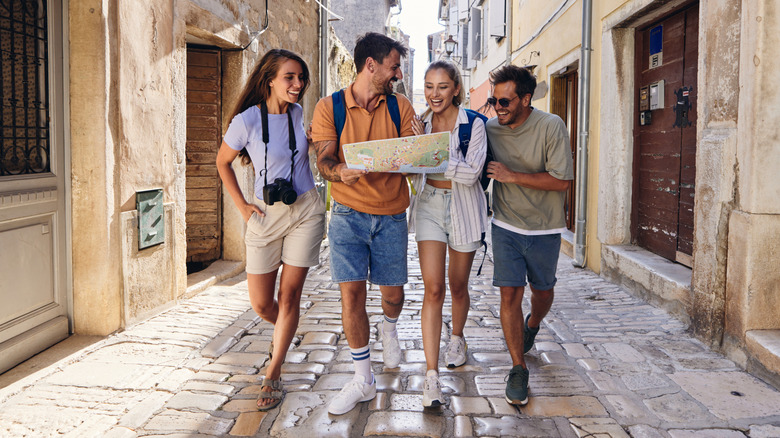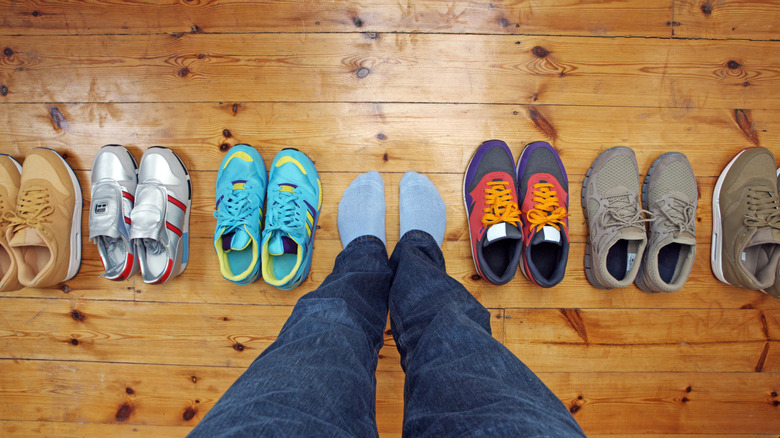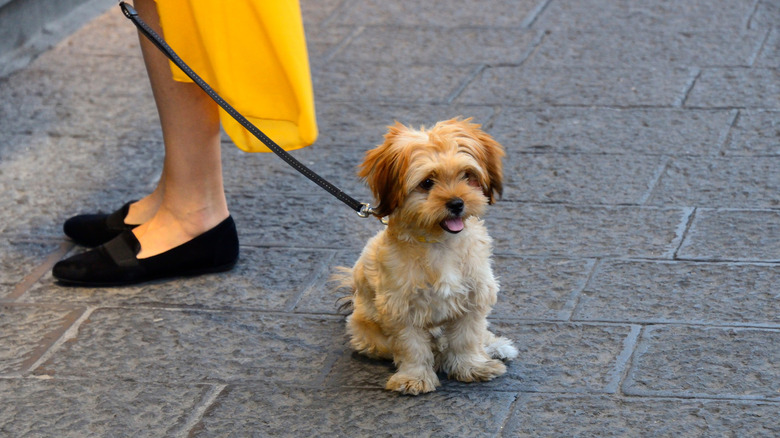Avoid These Types Of Shoes When Packing For Europe, Per Rick Steves' Son
We may receive a commission on purchases made from links.
Planning a trip to Europe involves a whole lot of research and decision-making. That said, no matter where you're headed or how long you'll be traveling, there are few things as stressful as knowing what to pack for your trip. From adapting to various weather conditions to ensuring you always look good during your vacation, choosing the right items requires a lot more than just throwing things into a suitcase and hoping for the best. And this is especially important when it comes to footwear, which ideally needs to balance comfort, style, and practicality — and all while adhering to limited luggage space.
Enter: Andy Steves. Following in his father Rick Steves' footsteps, Andy has spent the last 15 years helping aspiring travelers navigate their dreams of the perfect European adventure easily and effectively. From guided tours to travel tips, the podcast host and writer has quickly become a trusted voice for all things European travel advice. And, among his most practical packing tips, Andy's finally clearing the air on all things proper footwear for a more successful European holiday.
His advice? Ditch the boat shoes (Sperry's), tennis shoes, and flip flops, and stick to "fashion sneakers" that can be dressed up or down according to the occasion. Additionally, he recommends avoiding things like hiking boots in cities, writing on his blog that "there's no need for [them] on the streets of Paris." Ultimately, Andy's packing philosophy rests on a pretty simple principle: The idea that packing versatile footwear will save you precious luggage space while, at the same time, keeping you comfortable and stylish throughout your trip.
The best shoes to wear in Europe
Building on Andy Steves' advice, and in terms of choosing the perfect shoes for your upcoming European adventure, we recommend starting small and bringing along at least three pairs: A seasonal staple, shoes suitable for daytime exploring, and a final pair for evening activities.
For example, a classic Chelsea boot is a great option for the colder months. Better yet, they can easily be worn with everything from jeans to dresses, and still look good. This pair from Blundstone is praised by travelers everywhere for being both comfortable and durable — which is the perfect combination for those 20,000-plus-step days. Alternatively, if you're traveling during the summer, Birkenstock's classic Arizona slides have passed the European-streets-test countless times. One traveler even logged an impressive 10 miles in Barcelona without developing a single blister — something most other shoes couldn't even dream of doing. Better yet, both of these shoes can easily work as your evening pair, which opens up even more room in your suitcase.
Lastly, considering the fact that "dad shoes" have become surprisingly fashionable in recent years, choosing the perfect pair of daytime sneakers for your European trip is now less about "aesthetics" and more about personal preference. For example, classic styles like the Adidas Stan Smiths, New Balance 574s, and ASICS GEL-Kayano 14s tick all of the boxes in terms of support, style, and versatility. Otherwise, for a more polished touch, a pair of leather Ecco shoes — which travel expert Rick Steves swears by — are also a good option to bring along.
More tips for choosing the right European footwear
Now, let's move on to another detail: What color shoes to bring. In most cases, dark neutrals tend to be your safest bet. That said, you'll also want to avoid wearing anything that features too many bright and flashy colors. Not only will these be a lot more difficult to match with an already-limited number of outfits, but they also scream "tourist" (especially in European cities, where things tend to be a little more toned down). Make sure you also focus on shoes with cushioned footbeds and proper arch support. Trust us, your feet will thank you in the evening!
Speaking of treating your feet right, only pack shoes you've already broken in, and stay far, far away from any brand new pairs that you're not familiar with yet. After all, there's really nothing worse than having to deal with painful hot spots and blisters once you're back at the hotel (or halfway through your walking tour) — especially when you know that you're going to be back on your feet the next day, and the next, and the next. It's wise to pack some blister bandages even if you're wearing shoes you find comfortable, just in case.
And, whatever you do, travelers and locals alike also recommend that you avoid wearing white shoes while visiting big cities like Rome or Paris. That is, unless you're ready for them to get absolutely filthy from walking along dirty cobblestone streets all day long.


